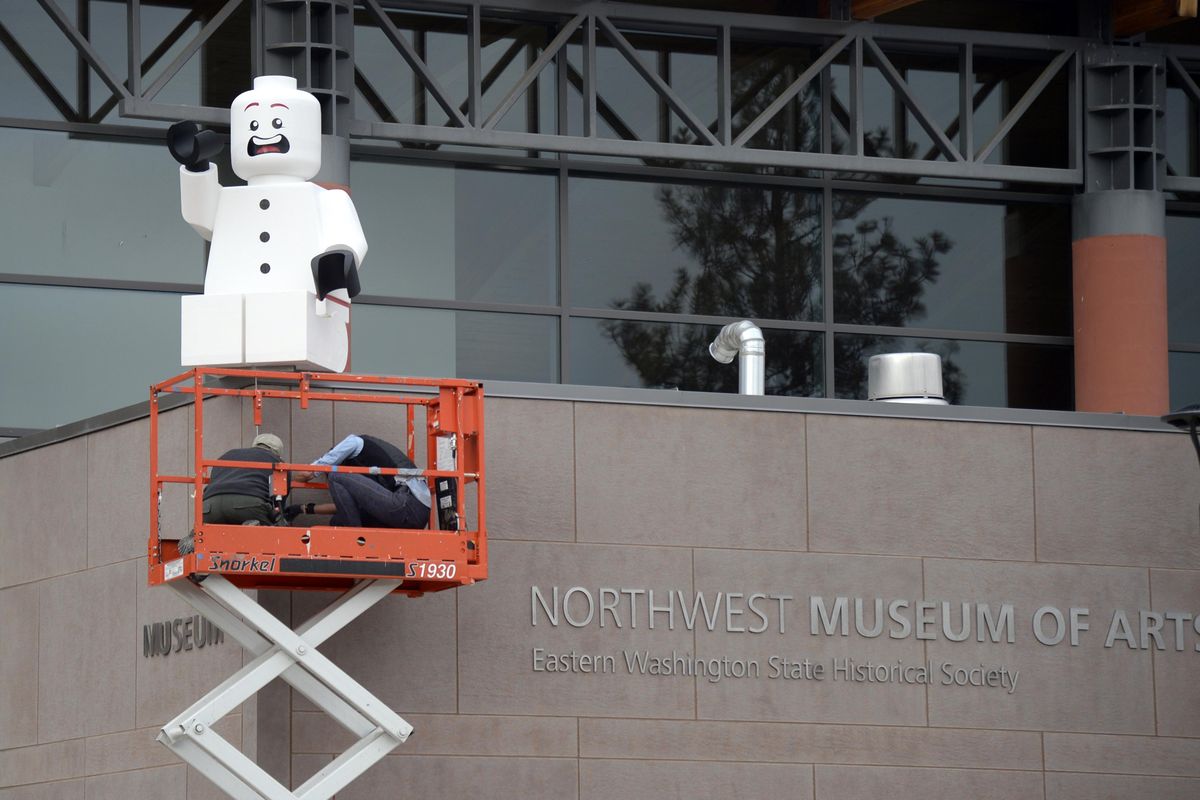Sculptor turns toys to art with ‘Nature Connects’ Lego exhibit at MAC

There are more than 31,000 Legos in the hummingbird and flower sculpture going on exhibit Saturday at the Northwest Museum of Arts and Culture.
The bird hovers 8 feet in the air as it drinks nectar from a trumpet flower.
A giant bee – 4 feet long with a 6-foot wingspan and constructed from 16,000 Lego bricks – hangs from the ceiling. Nearby, a 7-foot-tall rose is displayed, its petals intricately shaped from 41,000 pieces of plastic.
All told, the MAC is hosting half a million Lego bricks during “Nature Connects,” an exhibit of 27 of Sean Kenney’s larger-than-life sculptures made from Legos.
Legos, of course, are one of the most popular toys in the world, and have been for decades. But New York City artist Kenney does more than play with the bricks. He builds sculptures. He does portraiture and mosaics. And he created “Nature Connects” as a way to examine humanity’s connection to the natural world.
“All the pieces are about the relationship between man and nature, the relationships within nature,” he said. “We want to show literally the connections that are made in nature.”
There are four versions of the show that travel the country. While they share a few of the iconic sculptures – the hummingbird, for instance, and a gardener – each show is mostly different. A show in Florida, for instance, is getting a new giant peacock sculpture, which Kenney said was a challenging piece to build, with all those colors. Spokane is getting a mother bison and calf, the “big creepy bee” (as Kenney calls it), a tiger swallowtail butterfly and a germinating acorn.
The biggest difference, however, is going to be the setting. Kenney’s show was created to be displayed outdoors, in zoos, botanical gardens and arboretums. For only the second time, as he recalls, “Nature Connects” will be held indoors.
With an outdoor show, part of the experience is discovering the sculptures among the botanicals and enjoying the outdoor setting. Being indoors “really changes the feel,” Kenney said.
“It makes it feel more like an art gallery,” he said. “It’s actually kind of neat to see these pieces, which have for the past couple years been installed outdoors, installed with plantings around them and mulch and botanicals, now to have them up on a pedestal with a spotlight, and sort of elevating them to grandeur. It’s really cool.”
The layout of the MAC is allowing people to see some of these pieces as they haven’t been seen before. Namely, from above. Take the rose. It’s built complete, meaning it has petals furled around the next, like a real rose, even though when viewed from the ground, people can’t see what’s in the middle. The MAC has the rose placed so that it’s visible from above and below.
“It looks really wonderful the way they lit it,” Kenney said. “It’s beautiful.”
Lest parents worry about their children being tempted to dismantle the sculptures and start building their own – don’t. The works a completely glued. They’re also built around steel supports to keep them stable and coated in a UV protective layer to prevent sun damage. They’re sturdy, Kenney said, as they have to withstand the elements. A 200-pound tree branch once fell on one of the hummingbirds. A few pieces came off, but the bulk of the sculpture was fine, he said.
In addition to the sculptures, “Nature Connects” also includes something you would expect at a Lego art exhibit: actual Legos to play with. They can be found in the Play Zone, Kenney said.
“I hope (people) get inspired to go make something,” he said. “When you get there, people are itching. They’re like ‘This is great, I want to make something.’ Go right ahead. … I really love it because then you get the kids thinking, give them ideas and inspiration, then let them run off and do whatever they want. That’s the best part.”